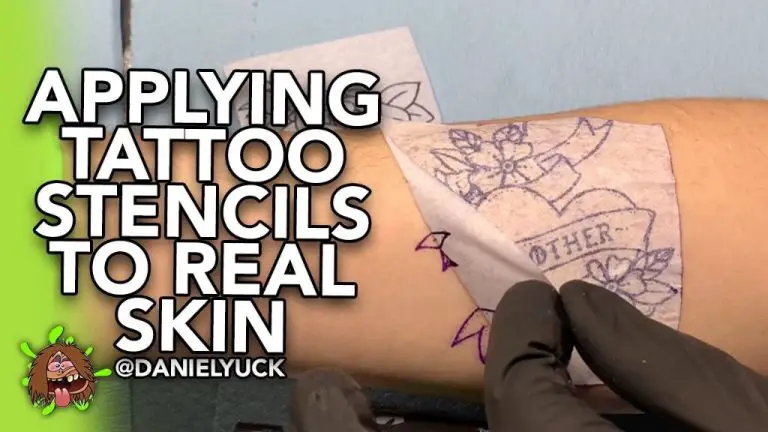Can You Paint With A Sponge Brush?
What is a Sponge Brush?
A sponge brush is a painting tool made from a porous, spongy material such as sea sponge, foam, or synthetic fibers (Source). It has an absorbent, soft texture that allows it to hold and release paint in a controlled way. Sponge brushes come in a variety of shapes and sizes, but common ones are rectangular or wedge-shaped.
Typically, sponge brush sizes range from 1-4 inches across. Miniature sponge brushes can be as small as 0.5 inches, while larger ones may be up to 6 inches wide. They are often attached to wooden handles, but can also come connected to plastic handles (Source). The spongy applicator material is either glued to the handle or wrapped around a ferrule.
The soft, absorbent texture allows sponge brushes to hold more paint than a regular brush. At the same time, the porous nature provides control over the amount of paint applied. This makes sponge brushes ideal for blending, soft edges, texturing, stippling effects, and more.
Pros of Using a Sponge Brush for Painting
One of the main benefits of using a sponge brush for painting is that it creates textured, uneven brushstrokes that add visual interest to your work. The porous nature of the sponge allows for paint to be applied in a scattered, mottled effect that is harder to achieve with a traditional bristle brush. According to https://abutterflyhouse.com/foam-brush-vs-paint-brush/, sponge brushes are excellent for creating textured effects on canvas paintings or faux finishes on walls and furniture.
Sponge brushes also apply paint more thinly and transparently than regular brushes. The foam head absorbs some of the paint, resulting in a lighter application of color. This makes sponge brushes ideal for layering glazes or washes and blending edges smoothly. According to redditors on https://www.reddit.com/r/HomeImprovement/comments/qvp1jh/, the thin application of paint from a foam brush helps avoid drips and brush marks, especially when painting trim or doors.
Finally, sponge brushes are incredibly versatile for painting many different surfaces and techniques. Their flexibility and rounded shape allow you to paint smoothly on irregular surfaces. Sponge brushes can be used for large paint projects like walls, but also detailed craft paintings, stenciling, dry brushing, and more. Their versatility makes them a useful addition to any painter’s toolkit.
Cons of Using a Sponge Brush for Painting
While sponge brushes can be useful for certain painting techniques, they do have some downsides to consider:
Sponge brushes are not ideal for precise, detailed painting work. The porous, absorbent nature of the sponge makes it difficult to paint clean lines or add finer details. Trying to do careful brushwork with a sponge brush will likely lead to frustration.
Paint dries quickly on a sponge brush between strokes. The open cell foam soaks up paint rapidly, but it can also cause the paint to dry out faster than on bristles. This means the painter needs to repeatedly re-load the sponge with more paint to keep working. Frequent reloading can disrupt the painting process and consistency of the paint application.
Sponge brushes cannot hold a lot of paint at once compared to a bristle brush. The limited capacity means they are better suited for broad strokes rather than detailed coverage. Painters may need to refill the sponge more often to complete their work.
According to this Quora discussion, some other cons are that sponge brushes can leave brush strokes in the paint, they don’t work as well spraying enamel paints, and they can apply paint unevenly compared to other brushes.
Types of Painting Projects Well-Suited to Sponge Brushes
Sponge brushes can be a great tool for certain painting techniques and surfaces. Here are some of the most common types of painting projects where a sponge brush really shines:
Abstract Art
The textured, mottled surface that a sponge brush creates is perfect for abstract painting. You can use a sponge brush to build up layers of color and create visual depth in abstract pieces. A sponge brush allows you to seamlessly blend colors directly on the canvas or surface without over-mixing them. According to https://abutterflyhouse.com/foam-brush-vs-paint-brush/, sponge brushes are ideal for free-form abstract painting where control and precision are not as important.

Murals
For large-scale mural painting, a sponge brush can help cover a lot of surface area efficiently. The porous surface quickly picks up and releases paint onto walls for base coats. Sponge brushes are also handy for creating backgrounds and textures when painting murals. Their flexibility allows you to paint in hard-to-reach spots.
Walls and Other Large Surfaces
In general, sponge brushes work well on broad wall surfaces and areas where you need to apply paint smoothly and evenly. The elasticity of the foam allows it to conform to curved or irregular surfaces. Sponge brushes can efficiently coat large backgrounds before adding finer details with traditional bristle brushes.
Crafts
From decorating wood signs to edging fabric, sponge brushes have many crafty uses. Their diffuse, feathered stroke is great for softly blending edges between colors. Sponge brushes are also handy for stenciling and adding textures like faux woodgrain on craft projects.
Preparing and Caring for Sponge Brushes
Getting the most out of your sponge brushes requires proper care and maintenance. Here are some tips for preparing new sponge brushes and keeping them in good condition:
Washing and conditioning new sponge brushes is an important first step. New sponge brushes may have residues from manufacturing and packaging that can affect paint pickup and application. Gently wash new brushes in warm, soapy water and rinse thoroughly. Once clean, condition the brush by dampening it and working the paint through the sponge. This helps make the bristles more flexible and ready for painting.
After painting, proper brush cleaning is essential. Start by wiping off excess paint with a rag or paper towel. Then wash the brush in warm, soapy water until the water runs clear. Avoid scrubbing too aggressively, as this can damage the sponge bristles. For dried acrylic paint, soak the brush in warm water to rehydrate and loosen the paint. Repeat washing until thoroughly clean.
Proper storage will prolong the life of your sponge brushes. Always store brushes with the bristles facing up to maintain their shape. Letting brushes dry completely before storage will prevent mildew and bacteria growth. You can wrap clean, dry brushes in plastic to protect the bristles in between uses.
Following these simple care steps will help keep your sponge brushes performing at their best painting session after painting session.
Painting Techniques with a Sponge Brush
Sponge brushes open up a variety of textured painting techniques that allow artists to achieve different visual effects. Here are some of the most common techniques used with sponge brushes:
Dabbing
Dabbing involves lightly tapping a loaded sponge brush against the surface to deposit small amounts of paint. This creates a mottled texture with scattered dots of color. Dabbing works well for subjects like rocks, foliage, and textured backgrounds. Use a circular dabbing motion to build up layers of texture.
Dry Brushing
Dry brushing involves wiping the sponge brush against a paper towel or rag so it’s nearly dry before applying light, sweeping strokes to the surface. This creates broken color with a scratchy, textured look. Dry brushing can suggest weathered wood, rough stone, grassy fields, or fur and hair textures.
Sponging
Sponging means applying smooth, even coats of paint using the flat face of the sponge brush. Lightly dampen the sponge and load it fully with paint, then wipe off any excess on a paper towel. Apply paint in overlapping layers, rinsing and reloading the sponge as needed. Sponging provides uniform coverage for backgrounds or basecoats.
Stippling
Stippling involves using the tip or corner edge of a sponge brush to apply small dots of paint. Hold the brush vertically and use short tapping or dotting motions. Stippling can create the illusion of blended color and is great for softly diffused backgrounds. Allow layers of stippling dots to overlap and build up gradations of tone and texture.
Achieving Different Textures and Effects
One of the biggest benefits of using a sponge brush for painting is the ability to create different textures and effects. By controlling your paint consistency, brush pressure, and techniques, you can achieve anything from smooth, blended looks to highly textured, multidimensional finishes.
For smooth, blended effects, dilute your paint slightly with water or medium and use a very light brush pressure. Work in layers, allowing each layer of diluted paint to dry before applying the next. This will help blend colors smoothly without overmixing. For more opaque coverage, use less diluted paint and increase brush pressure.
To create textured, brushstroke effects, use thick, undiluted paint and heavier brush pressure. Dab and stipple the paint onto the surface instead of brushing back and forth. Layer colors next to each other instead of on top of each other. Let some of the underlying layers show through for dimension.
You can also stipple on layers of different colored paints close together to get a mottled, blended effect in the textures. Sponging and dabbing works better than brushing for creating texture. Switch between brush sides to vary texture even more.
The natural absorbency of the sponge brush allows you to control paint opacity and blending easily. Let the sponge fully absorb the paint for a lighter wash of color. Press down as you apply paint to increase opacity. Sponge brushes make blending colors effortlessly smooth.
With some experimentation and practice, you can achieve an endless variety of textures and effects with sponge brushes from ultra smooth to highly textured.
Tips for Getting the Most out of Sponge Brushes
Sponge brushes can create beautiful painted effects, but getting the most out of them requires following some best practices.
First, pay attention to paint consistency. Sponge brushes work best with thinner paints that allow the sponge to absorb and then release the paint onto the surface. Thick or globby paint won’t penetrate the sponge fully. Aim for a consistency just slightly thicker than watercolor paint. Adding a touch of extender or floetrol can help thin acrylics to the right viscosity.
Next, take care of your sponge brushes for longevity. Avoid crushing or wringing them out, which can damage the sponge. Instead, gently blot brushes on paper towels or newspaper. Let brushes fully dry between uses rather than leaving them soaking in water. With proper care, a quality sponge brush should last through many projects.
Finally, consider using multiple sponge brushes. Keep separate brushes for your base color, accent colors, and blending to avoid muddying your paints. Switch to a clean dry brush when transitioning between darker and lighter shades. Having 3-4 sponge brushes on hand gives you flexibility to work quickly and efficiently.
Following these tips will allow you to get the most versatility and mileage out of your sponge brushes for all your painting projects.
Common Painting Mistakes with Sponge Brushes
Using a sponge brush for painting can lead to some common mistakes if proper techniques are not followed. Here are some of the most frequent errors that occur with sponge brush painting:
Applying too much paint is a very common mistake. Sponge brushes are designed to hold paint within the foam pad and apply it lightly to surfaces. If too much paint is loaded onto the sponge, it can create thick, gloppy brushstrokes and lead to dripping. It’s important to only apply a small amount of paint to the brush at a time for smooth, even coverage.
Not properly washing sponge brushes after use is another frequent error. Acrylic and oil paints can dry within the foam pad if not thoroughly rinsed. This leaves brushes stiff and makes them unusable for future painting sessions. Sponge brushes should be gently hand washed after each use and air dried to maintain their shape and suppleness.
Using low quality sponge brushes that shed foam pieces or fall apart quickly is also problematic. Cheap sponge brushes made with low density foam can lead to specks of foam absorbing into painted surfaces. Investing in good quality sponge brushes from art brands will provide better results and longevity.
Frequently Asked Questions
What are the best uses for a sponge brush?
Sponge brushes work great for painting walls, ceilings, trim, furniture, crafts, and other surfaces where you want smooth, uniform coverage. They excel at applying primers, sealers, varnishes and polyurethanes. Sponge brushes are also good for blending and softening edges.
Can you use a sponge brush for acrylic painting?
Yes, sponge brushes are commonly used for acrylic painting. Their absorbent foam head allows for blending and smudging acrylic colors. For best results with acrylics, use a brush specially designed for acrylics rather than a standard sponge brush.
How do you clean a sponge brush?
Rinse sponge brushes in the appropriate solvent immediately after use. For water-based paints, rinse in warm water and soap. For oil-based paints, rinse in mineral spirits or paint thinner. Allow to fully air dry before reusing or storing. Discard and replace brushes once they become overly saturated with paint.
Can you use a sponge brush without paint thinner?
Yes, as long as you are using water-based paints. Sponge brushes work well applying latex and acrylic paints without any paint thinner. Simply dip in paint and apply. For oil-based paints, you need paint thinner for proper brush function and cleanup.
How do you get a smooth finish with a sponge brush?
Use light, even pressure and maintain a consistent painting direction. Overlap edges of each stroke to blend. Apply paint in thin layers and allow to fully dry between coats. Use high quality sponge brushes with a fine, smooth foam texture. Sand lightly between coats as needed. Finish with a foam roller for an ultra smooth surface.





